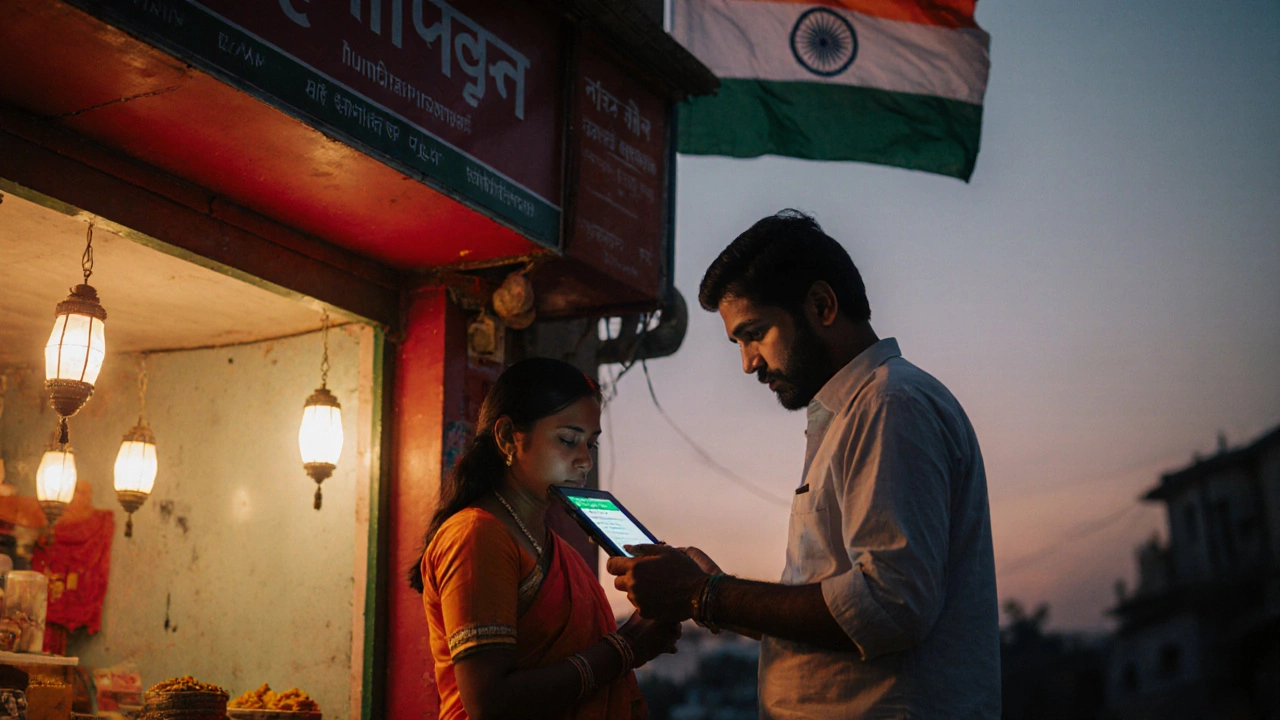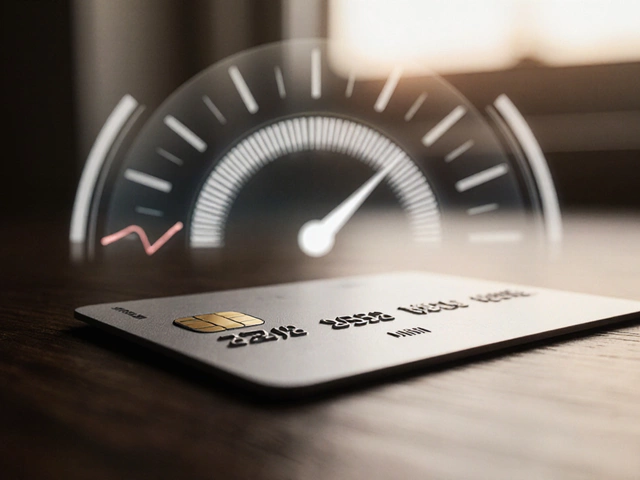
Business Loan EMI Calculator
Enter Loan Details
EMI:
Total Interest:
Total Repayment:
Interest Rate:
Lender Comparison
Bank
Interest: 8.5-12%, Processing: 0.5-1.5%, Approval: 7-15 days
NBFC
Interest: 10-14%, Processing: 1-2%, Approval: 3-7 days
Digital Platform
Interest: 12-18%, Processing: 2-3%, Approval: 24-48 hours
Government Scheme
Interest: 7-9% (subsidized), Processing: 0%, Approval: 5-10 days
When Indian entrepreneurs ask, ‘Is it easy to get a business loan?’ the answer depends on the lender, the borrower’s profile, and the paperwork you can pull together. Below is a plain‑English roadmap that walks you through the whole picture - from eligibility rules to the fastest digital routes - so you can decide whether today’s market feels simple or steep.
Business loan is a short‑term or long‑term credit facility that companies use for working capital, equipment purchase, expansion, or any other operational need. In India, these loans are offered by traditional banks, non‑banking financial companies (NBFCs), and a growing set of online lenders. The ease of getting one hinges on three pillars: business loan India eligibility, documentation, and the speed of the lender’s approval engine.Key Takeaways
- Most banks still require a 3‑year turnover, a good credit score (≥750), and collateral.
- NBFCs and digital platforms can approve loans within 24‑48 hours for turnover as low as ₹5 lakh.
- Government schemes like Mudra Yojana provide interest‑subsidised loans up to ₹10 lakh for micro‑enterprises.
- Preparing a clean KYC, bank statements, and a clear repayment plan cuts approval time by half.
- Comparing interest rates, processing fees, and loan tenure helps you pick the right lender quickly.
What Exactly Is a Business Loan in India?
In the Indian context, a Small and Medium Enterprises (SME) can tap into a range of loan products:
- Term loans - fixed amount repaid over 1‑7 years.
- Working‑capital loans - flexible draws against inventory or receivables.
- Overdrafts - linked to a current account, usable on‑demand.
All of these fall under the umbrella of a business loan, but the paperwork, risk assessment, and pricing differ drastically between lenders.
Who Sets the Rules? The Role of the Reserve Bank of India
The Reserve Bank of India (RBI) governs the overall credit policy. It caps the prime lending rate, mandates minimum capital adequacy for banks, and publishes the Credit Information Companies (CIC) Act that standardises credit score reporting. Whenever a bank or NBFC evaluates your loan, the RBI’s guidelines shape the interest‑rate floor and the amount of collateral it can ask for.
Eligibility Checklist - Do You Tick the Boxes?
Before you even stare at an application form, run through this quick self‑audit:
- Turnover: Most banks want at least ₹3 million annual turnover; NBFCs may work with ₹1 million.
- Credit score: A score of 750+ (as reported by Credit score agencies like CIBIL) signals low risk.
- Years in business: 2‑3 years for banks, 1 year for many digital lenders.
- Collateral: Property, equipment, or inventory can lower the interest rate. Some digital lenders offer unsecured loans up to ₹30 lakh, but at higher rates.
- KYC compliance: PAN, Aadhaar, and proof of address are mandatory.
If you miss any of these, you can still get a loan, but expect a longer approval cycle and higher fees.
Where to Apply - Banks, NBFCs, or Digital Platforms?
Each channel has its own speed, cost, and flexibility.
| Lender Type | Typical Processing Time | Interest Rate Range | Loan Size (₹) | Collateral Needed? |
|---|---|---|---|---|
| Public / Private Banks | 7‑15 days | 8.5‑12 % (RBI‑linked) | 5 lakh - 10 crore | Usually yes |
| NBFCs | 3‑7 days | 10‑14 % | 2 lakh - 5 crore | Often flexible |
| Digital Lending Platforms | 24‑48 hours | 12‑18 % (higher risk) | 1 lakh - 30 lakh | Usually no (unsecured) |
| Government Schemes (e.g., Mudra) | 5‑10 days | 7‑9 % (subsidised) | Up to 10 lakh | No formal collateral |
Pick the channel that matches your urgency and willingness to pledge assets.

Step‑by‑Step Application Process
Here’s a universal flow that works for most lenders. Adjust the timeline based on the channel you choose.
- Gather documents: PAN, Aadhaar, GST registration, bank statements (last 6 months), profit‑and‑loss statement, and existing loan statements if any.
- Run a credit check: Get your latest Credit score. A clear report saves the lender time.
- Choose a lender: Use the comparison table above to shortlist 2‑3 options.
- Fill the online/offline application: Provide turnover, purpose of loan, and repayment plan.
- Submit collateral (if required): Upload property documents or pledge inventory.
- Verification: The lender’s credit team will call, verify KYC, and may visit your premises.
- Approval & Disbursement: Once approved, funds are credited to your current account within 24 hours for digital lenders, or 3‑5 days for banks.
Tip: Keep a digital folder ready with PDFs of all documents. That alone can cut the processing time by 30 %.
Understanding Costs - Interest Rate, Fees, and Tenure
Interest rates in 2025 are largely tied to the RBI’s repo rate, currently at 6.5 %. Banks usually add a 2‑5 % spread, while NBFCs tack on 4‑8 % due to higher risk. Digital platforms may charge a flat processing fee of 2‑3 % of the loan amount.
Typical Interest rate ranges:
- Bank term loans: 8.5‑12 % per annum.
- NBFC working‑capital: 10‑14 %.
- Digital unsecured: 12‑18 %.
- Government‑subsidised: 7‑9 %.
The Loan tenure can be as short as 6 months for short‑term cash needs, or up to 7 years for equipment financing. Longer tenures lower EMIs but increase total interest paid.
Common Pitfalls and How to Avoid Them
Many borrowers see their applications stall at the verification stage. Here’s what usually goes wrong and the quick fix:
- Missing GST filings: Lenders treat GST returns as proof of turnover. Keep them up‑to‑date.
- Poor credit mix: Too many overdue personal loans hurt the business credit score. Consolidate or settle before applying.
- Inconsistent statements: Reconcile cash book with bank statements; discrepancies raise red flags.
- Unclear purpose of loan: Draft a 1‑page use‑of‑funds plan. It shows the lender you have a repayment strategy.
- Over‑borrowing: Borrow only what you can comfortably service. A debt‑service coverage ratio (DSCR) above 1.25 is considered safe.
Address these points early, and you’ll feel the process turn from “hard” to “manageable”.
Government Support - Mudra Yojana and Other Schemes
The Government scheme most people reference is the Pradhan Mantri Mudra Yojana (PMMY). It offers three categories:
- Shishu: Loans up to ₹50 k for very new businesses.
- Kishor: Loans from ₹50 k to ₹5 lakh for slightly established firms.
- Tarun: Loans from ₹5 lakh to ₹10 lakh for growth‑stage enterprises.
Interest is subsidised (around 7 %) and the application can be done through any public‑sector bank or the official PMMY portal. No collateral is required, but you must provide a solid business plan.
Quick Checklist Before You Submit
- Verify PAN and Aadhaar are linked and active.
- Download the latest credit report and resolve any discrepancies.
- Prepare the last 6 months of audited financials or tax returns.
- Draft a concise loan‑purpose statement (max 300 words).
- Choose the lender that matches your speed vs. cost preference.
Cross‑check this list; it’s the difference between a 2‑day approval and a week‑long wait.

Can a startup with less than one year of revenue get a business loan?
Yes, especially through NBFCs or digital lenders that accept turnover as low as ₹1 lakh and often don’t ask for collateral. However, the interest rate will be higher (12‑18 %) and you’ll need a strong personal credit score.
What documents are mandatory for a bank business loan?
PAN, Aadhaar, GST registration, audited profit‑and‑loss statements, bank statements for the last six months, proof of collateral (if any), and a detailed loan‑use plan.
How does the RBI influence my loan’s interest rate?
The RBI sets the repo rate, which is the baseline for all lending rates. Banks add a spread (usually 2‑5 %) while NBFCs add a larger spread. When the RBI cuts the repo rate, you’ll see a drop in your loan’s interest cost.
Is collateral always required?
No. Unsecured digital loans and most government schemes (like Mudra) do not ask for collateral, but they compensate with higher interest rates.
What is a good debt‑service coverage ratio for my business?
A DSCR of 1.25 or higher is considered safe. It means your net operating income is at least 25 % higher than your total debt obligations.








Write a comment